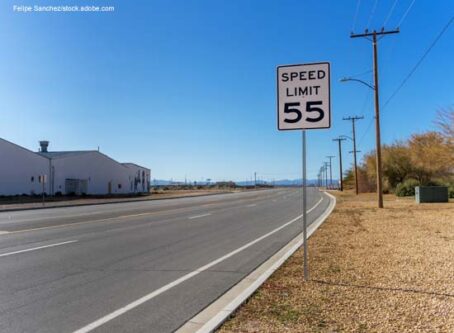Houston and Austin dominate list of most truck-congested roadways in Texas
Consistent economic growth in Texas, which is practically its own country, has had the unintended effect of congested roadways. The Texas A&M Transportation Institute compiled data to determine the 100 most truck-congested roadways in the Lone Star State.
Using traffic volume and speed data, the Transportation Institute released its annual list of the most crowded roads in Texas. According to a news release, researchers compared the time it takes to travel on congested roadways against the time to travel the same corridor in uncongested conditions.
The most truck-congested roadway in 2019? Interstate 35 from U.S. Highway 290 N/State Highway 69 to Ben White Boulevard/State Highway 71 in Austin.
That same roadway is also ranked as the second-most congested roadway in Texas when accounting for all vehicles. Houston dominated the truck-congested roadways list. The top 10 most truck-congested roadways in Texas are:
- I-35 from U.S. 290 N/SS 69 to Ben White Boulevard/SH 71 in Austin.
- Eastex Freeway between Interstate 10/U.S. Highway 90 and state Highway 288 in Houston.
- Bob Bullock Loop/state Loop 20 between Mexico border and I-35/U.S. Highway 83 in Laredo.
- Interstate 610 West between I-10/U.S. Highway 90 and Interstate 69/U.S. Highway 59 in Houston.
- Interstate 45 between I-10/U.S. Highway 90 and I-610 South in Houston.
- I-35 between U.S. Highway 290 West/State Highway 71/Ben White Boulevard and Slaughter Lane in Austin.
- I-10/U.S. Highway 90 between Interstate 45 North and I-69/U.S. Highway 59 in Houston.
- Katy Freeway between N. Eldridge Parkway and State loop 8 West in Houston.
- I-35 East between Interstate 30 and State Highway 183 in Dallas.
- I-69/U.S. Highway 59 between I-610 West and state Highway 288 in Houston.
For the most part, the 10 most truck-congested roadways list is consistent with the list for all vehicles.
One exception is the third most truck-congested roadway, the Bob Bullock Loop in Laredo. Mostly a freight corridor, that roadway ranked 191st when accounting for all vehicles.
Annual truck congestion costs for the No. 1 roadway alone were nearly $40 million. The Transportation Institute defines “truck congestion costs” as “the yearly value of wasted time and other operating costs of large trucks and the extra diesel consumed associated with congestion.”
According to the research, truck congestion costs statewide totaled to $1.6 billion.
Truck delay across the Lone Star State was nearly 30 million hours, with more than 50 million gallons of diesel wasted.
Accounting for all congestion costs, trucking’s impact was minimal. The Transportation Institute calculates that trucks account for about 6% of delays and 14.5% of all congestion costs. However, trucks are responsible for a quarter of wasted fuel.
The following are the 10 most congested Texas roadways, accounting for all vehicles:
- I-610 West between I-10/U.S. Highway 90 and I-69/U.S. Highway 59 in Houston.
- I-35 between U.S. 290 West/state Highway 71/Ben White Boulevard and U.S. Highway 290 East in Austin.
- I-69/U.S. Highway 59 between I-610 West and state Highway 288 in Houston.
- Eastex Freeway between I-10/U.S. Highway 90 and state Highway 288 in Houston.
- State Highway 366 between U.S. Highway 75 and North Beckley Avenue in Dallas.
- I-45 between I-10/U.S. Highway 90 and I-610 South in Houston.
- U.S. Highway 75 between Lyndon B. Johnson Freeway and state Highway 366 in Dallas.
- I-35 East between Interstate 30 and state Highway 183 in Dallas.
- Katy Freeway between N. Eldridge Parkway and state Loop 8 West in Houston.
- I-35 between U.S. Highway 290 West/state Highway 71/Ben White Boulevard and Slaughter Lane in Austin.
Total traffic delay in Texas was more than 500 million hours at a cost of $11.3 billion. Consequently, more than 200 million gallons of fuel were wasted.
In October, the Federal Highway Administration’s Urban Congestion Trends report showed that urban congestion has not improved much. However, the report indicates that Austin and Houston both experienced congestion improvement in 2018. However, congestion in San Antonio worsened significantly compared with the 52 largest cities in the country.
To see the complete list of truck-congested roadways in Texas, click here.









